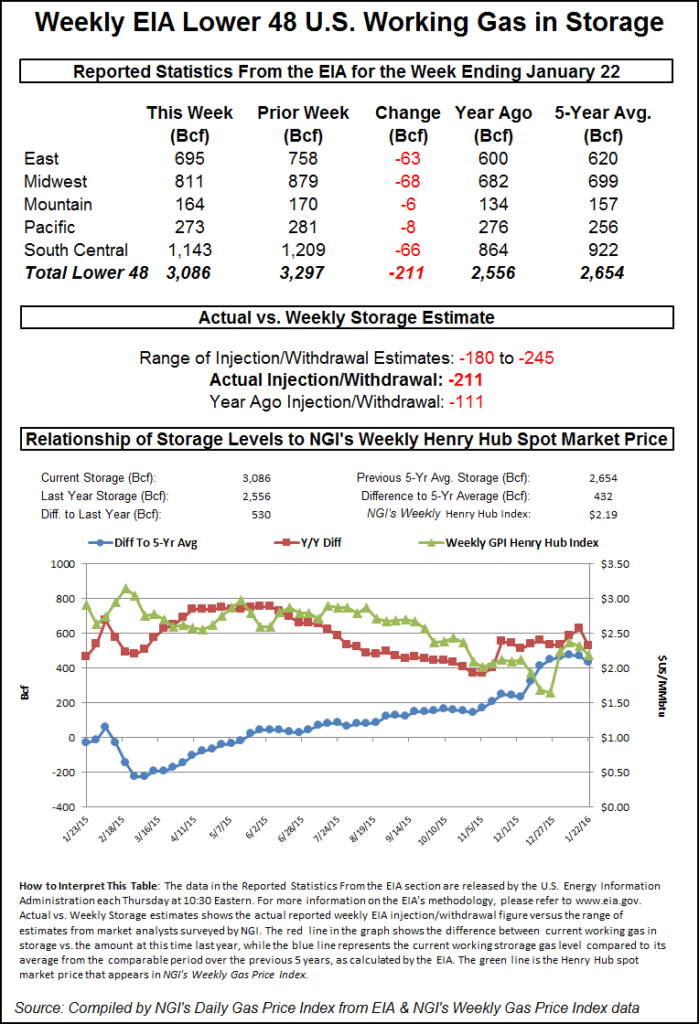Markets | NGI All News Access | NGI Data | Regulatory
NatGas Futures Yawn Despite First 200-Plus Bcf Storage Withdrawal
The natural gas futures market was largely unimpressed with Thursday morning’s storage report, which revealed that 211 Bcf was removed from underground storage for the week ending Jan. 22.

While the season’s first 200-plus Bcf draw was significantly larger than historical comparisons for the week, many analysts and traders had a pretty good bead on what the Energy Information Administration (EIA) report would show.
As a result, the March natural gas futures contract in its first regular session action as the prompt month had a muted response. In the minutes prior to the 10:30 a.m. EST release, the March contract was trading at $2.111. Immediately after the report, the prompt-month contract hovered around $2.135. As of 11 a.m. EST, March was trading at $2.150, down seven-tenths of a cent from Wednesday’s regular session close.
The muted market response to such a large draw might have to do with the weather forecast. Ahead of the report, Citi Futures Perspective Analyst Tim Evans said he was concerned that the reaction to the large storage withdrawal might be the market’s last chance to rally, since the relatively warm temperatures forecast for next week will translate into a much smaller storage decline. He added that natural gas futures were “on the defensive Thursday morning after the temperature outlook turned slightly warmer than a day ago, undercutting heating demand for the fuel.”
Randy Ollenberger, an analyst with BMO Capital Markets, agreed that weather is the focus. “We believe the storage report will be viewed as neutral, given the draw was roughly in line with expectations,” he said on Thursday. “Weather will remain the key driver of natural gas prices over the next two months; however, we see limited upside.”
Heading into the report, most industry insiders were looking for a withdrawal north of 200 Bcf. Evans hit the nail on the head with his 211 Bcf withdrawal expectation. A Reuters survey of 23 industry traders and analysts produced a 180 Bcf to 245 Bcf withdrawal range and a consensus expectation that 207 Bcf was removed during the week. Last year saw a 111 Bcf draw for the week and the five-year average decline stands at 170 Bcf.
As of Jan. 22, working gas in storage stood at 3,086 Bcf, according to EIA estimates. Stocks are still 530 Bcf higher than last year at this time and 432 Bcf above the five-year average of 2,654 Bcf. The Midwest Region made the largest draw for the week at 68 Bcf, followed by the South Central Region (66 Bcf) and the East Region (63 Bcf). The Pacific and Mountain regions removed 8 Bcf and 6 Bcf, respectively.
© 2024 Natural Gas Intelligence. All rights reserved.
ISSN © 1532-1231 | ISSN © 2577-9877 |
